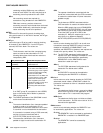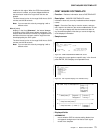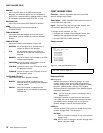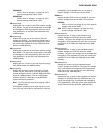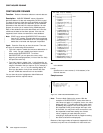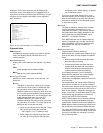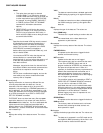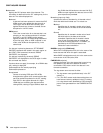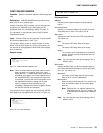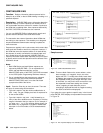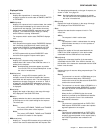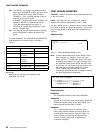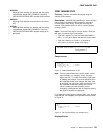CEMT INQUIRE DSNAME
Notes:
1. This option does not apply to shunted
in-doubt
UOWs. Try to resolve the shunted
in-doubt UOWs that hold locks on the data set
in other ways before issuing RESETLOCKS;
for example, by using COMMIT, BACKOUT,
or FORCE (see the CEMT SET DSNAME
command for information about these
options).
2. RESETLOCKS can fail during the commit
phase (for example, if an error occurs while
CICS is trying to release the RLS locks), in
which case the UOWs revert to being shunted
as commit-failed UOWs.
Retry
Specifies that shunted UOW log records, caused
by failed backout and commit processing as a
result of the failure of this data set, should be
retried. This is similar in operation to the EXEC
CICS RESYNC command, but applies to
backout-failed and commit-failed UOWs only, and
not to in-doubt UOWs.
You should use RETRY when the data set has
shunted backout- or commit-failed UOWs
associated with it, and you believe that some or all
of the data set problems are either transient or
have been resolved.
Messages, issued at the time of a data set failure
that causes UOWs to be shunted, recommend the
actions that are required to recover from the
failure.
RETRY does not affect data integrity, and can be
used safely at any time to enable some failed
recovery work to complete.
FIlecount(
value
)
displays information on how many different files are
currently associated with this data set. You can
associate a file with a data set by a job control DD
statement, or dynamically by a DSNAME parameter on
the file definition. If a file has been associated by a job
control DD statement, the file name cannot be changed
by a CEDA command or by a CEMT or EXEC CICS
SET FILE DSNAME command.
FILECOUNT does not show how many files are open
against the data set; it only shows how many files are
associated with the data set. If a file is associated with
a data set and is then closed and associated with a
different data set, the FILECOUNT of the first data set
decreases by 1, and the FILECOUNT of the second data
set increases by 1.
Validity
displays the validity of the data-set name. The values
are:
VAlid
The data-set name has been validated against the
VSAM catalog by opening a file against that data
set.
INvalid
The data-set name has not been validated against
the VSAM catalog by opening a file against that
data set.
Object
displays the type of the data set. The values are:
Path (VSAM only)
This data set is a path leading to another data set.
BASE
The named data set is a base data set, as
opposed to a path data set.
Recovstatus
displays the recovery status of the data set. The values
are:
FWDRECOVAble
All updates to the data set are logged for both
backout and forward recovery.
NOTrecovable
Updates to the data set are not logged.
This response may also be returned as the result
of use of the XFCNREC global user exit. A
program enabled at XFCNREC may indicate that
file opens should proceed even if there is a
mismatch in the backout recovery requirements for
different files associated with same data set. In
these circumstances, the data set is marked as
NOTRECOVABLE to indicate that its data integrity
can no longer be guaranteed.
The condition remains until cleared by a CEMT or
EXEC CICS SET DSNAME REMOVE command,
or by an initial or cold start of CICS (if the
associated data set is not in backout-failed state).
While the data set is in this state, backout logging
is performed for a particular request based on the
specification in the file definition. Therefore
backout logging may occur for requests via one
file and not via another.
RECOVERAble
All updates to the data set are logged for backout.
UNDetermined
The recovery status of the data set is not known
because files accessing the data set have not
been opened for output.
Backuptype
displays the backup type of the data set. The values are:
Static
The data set is accessed in non-RLS mode and is
not eligible for BWO processing. All the files in this
data set must be closed and the data set
76 CICS Supplied Transactions



